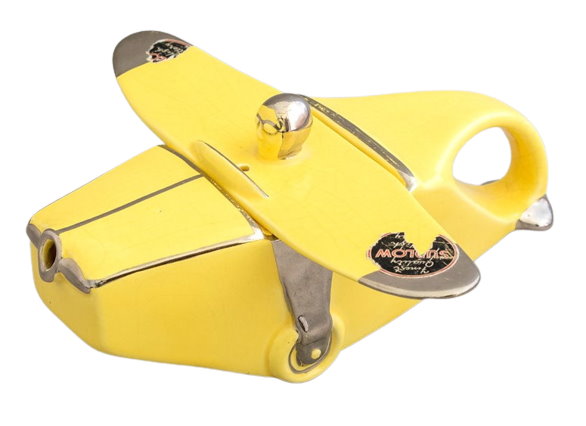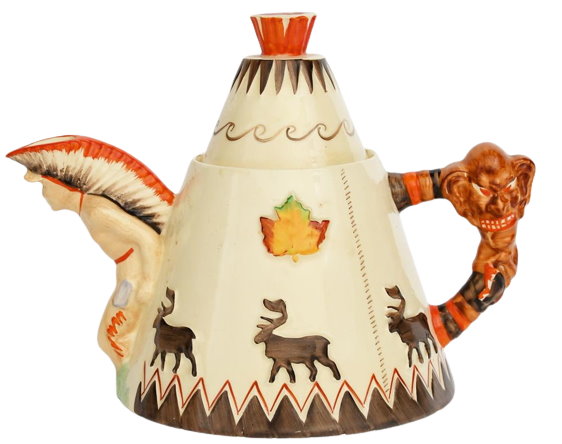To the rest of the world the British obsession with tea seems bizarre, but the love affair has produced a whole range of interesting collectibles, none more so than the novelty teapot.
Tea reached Britain in the early-18th Century and was highly priced, initially thought of as a herbal remedy. Even from this early period the Staffordshire potteries produced teapots in the shape of houses, camels, squirrels and monkeys. Wedgwood and Whieldon produced one of the most famous range of teapots of the mid-18th Century which were shaped as garden vegetables and fruit.

The popularity of novelty teapots grew and in the 19th Century other companies began producing fine teapots notably Minton who came out with classic designs such as the Chinaman, the Monkey and the Tortoise.

The Belleek ‘Echinus’ Pattern was a popular style from the late 19th Century, based on the spiny sea urchin and pieces of coral. Teasets were produced in various colourways from the first and second Belleek periods (1863-1890, and 1891-1926) and these are the most sought after. Another famous teapot was produced by Worcester in 1881 ‘The Aesthetic teapot’. This teapot satirizes the art movement led by Oscar Wilde and features a young man on one side and a woman on the other.
Novelty teapots have been produced throughout the 20th Century and have covered a variety of subjects from Dicken’s characters to wigwams. Traditional subjects have been popular throughout: thatched or timbered houses, and animals. Leading companies include Sadler’s, Beswick and Price’s.

Many designers have produced one-off and limited edition teapots. Clarice Cliff produced the famous ‘Teepee Teapot’ in the early 1950s. Although produced after her famous work of the 1930s it is still one of the most collectible of all novelty teapots. The ‘Teepee Teapot’ is pictured left and was produced for the Canadian market. It features a totem pole for a handle, a chief wearing headdress as the spout, and also has as decoration maple leaves.

Novelty teapots are still popular today with many of the traditional companies such as Minton, Sadler and Royal Albert still producing pots.
In the late 20th century Cardew Design were probably the leading manufacturer of novelty teapots in the world today. Designer Paul Cardew has brought the designs of novelty teapots forward with some very clever teapot designs. Teapots from Cardew which have only been out of production for a few years such as ‘The Cactus’ are already fetching a premium on the secondary market.
Other independent designers such as Tony Carter of Carters Teapots has created a wealth of novelty teapots to collect.
Collectors of teapots often stick to a theme and not just a designer e.g. animals, seaside or characters. Transport is a popular theme among collectors.
The variation in themes, styles, and prices to suit all pockets make novelty teapots a teariffic collectible.
Teapot Related
English Teapots – Their Origin and Variety
Novelty Teapots at Stoke Art Pottery
Sadler Car Teapots information and price guide





